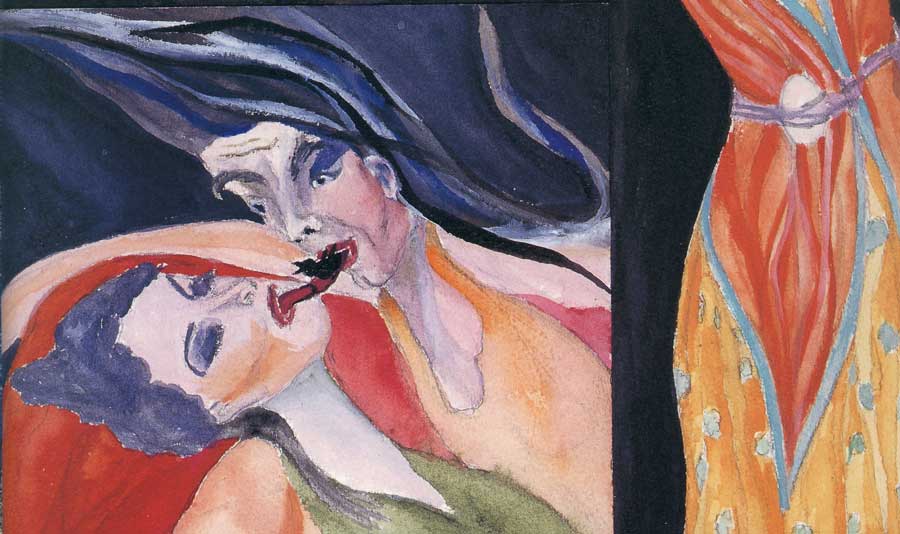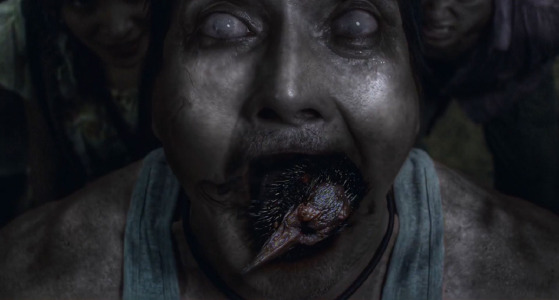“In your research, what did you find out about the supposed black chick that people swallow to become an aswang? Erik Matti used it in his movie but never explained it. I also don’t remember any text or movie that has explained its origins.”
This was the question posed to me through Facebook. As it would happen, this has interested me in the past and I was able to share some insight.
The Black Chick:
Amongst the many difficulties in mapping Philippine Mythology are the blanket characteristics that have been applied to the various creatures. In reality, the aswang from Bicol is very different from the aswang in the Visayas, which is very different from the aswang in Mindanao, and so on. In the 1960s when Maximo Ramos collected all his data for the Creatures of Philippine Lower Mythology, he placed characteristics under creature names, but did not always specify where those particular traits came from. The swallowing of a black chick was introduced as a general trait of the aswang by Ramos, and was solidified in aswang-lore with Gilda Coredero-Fernando’s beautiful illustrative book “The Aswang Inquiry”.

Since this time we have seen the small black chick (and inherited aswang power) transferred mouth to mouth in, among other things, the award winning stage play “Luna: An Aswang Romance”, and in Erik Matti’s “Tiktik: The Aswang Chronicles”. This brings us around to the question that was posed, “Why a chick?”
What may not be known by the authors of the latter uses, yet was referenced by both Maximo Ramos and Gilda Cordero-Fernando, is that this belief stems from a paper written by Frank Lynch between 1946-48, “An mga Asuang: A Bicol belief” (published in the Philippine Social Sciences and Humanities Review l4 – December 1949)
Which came first, the chicken or the egg?
Frank Lynch was an American pioneer of sociology and anthropology in the Philippines. In his paper, he wrote “In the Bicol region – as throughout most of the Philippine lowlands – belief in the asuwang is a living belief.”
We have to remember that “belief” is the state of mind in which a person thinks something to be the case, with or without there being empirical evidence to prove that something is the case with factual certainty. Aswang beliefs include a substantial amount of episodic material from personal experience or, for cultural beliefs, from folklore. As with any creature that takes on human form, we need an origin to rationalize these beliefs.
Ramos summarized Lynch’s work by saying, “To become a viscera sucker by personal exertion one held a fertilized chicken egg against one’s belly and then tied it in place with a cloth around one’s body. After an unspecified time, the chicken from the egg passed into one’s stomach by a sort of osmosis. Then one became able to emit the sound characteristic of the aswang. The eggshell was saved and placed in a bamboo tube in the mixture of coconut oil and chicken dung earlier mentioned.”
The chicken dung earlier mentioned was mixed with coconut oil to start the transformation process.
Ramos then goes on to talk about transferring the chick, “The most widely known means of transmitting the power of an aswang was that by a dying aswang, who could not die until he had handed down his occult powers. The dying aswang simply passed on the chick in his stomach by putting his mouth close to that of the initiate, whereupon the young bird hopped out of the dying one’s mouth and into that of the initiate.”
While this answers where the chick being transferred came from, it isn’t exactly clear on why it was a fertilized egg in the first place.

Egg Lore:
In many magical and spiritual systems, the egg is seen as the perfect symbol of life and fertility. Historians of religions inform us that in many mythologies the egg is also an archetypal symbol of world creation. In the Mandaya (Mindanao) folk story “The Children of the Limokon”, eggs represent the birth of man. “In the very early days before there were any people on the earth, the limokon (a kind of dove ) were very powerful and could talk like men though they looked like birds. One limokon laid two eggs, one at the mouth of the Mayo River and one farther up its course. After some time these eggs hatched, and the one at the mouth of the river became a man, while the other became a woman.”
Folklore from many corners of Europe taught that supernatural creatures could empty the source of their strength into an egg or even hide their soul there. After making this transfer they usually hid the egg in some unusual place, often inside the body of another animal. After that, the only way to diminish their powers or to kill them was to find the egg and break it. Folktales describing these kinds of soul transfers have been collected from Ireland, Iceland, and Italy, as well as Brittany in northern France, Bohemia in the Czech Republic, and Lapland.
This doesn’t show any direct links to the Philippines, but I believe the very complex intricacies of Philippine Mythology may have held similar beliefs. For this we need to weave a bit of a thread to the migrations that originated in the Malay Peninsula.
If we look at the Javanese myth of Tantu Pagelaran, explaining the origin of Java island, an egg plays a malevolent role. ” Meanwhile, a woman of the village of Dadapan, found an egg. She put the egg in her Lumbung (Rice Barn). After a certain period the egg vanished, replaced by a snake. The villagers wanted to kill the snake, but the snake said, “I’m the son of Aji Saka, bring me to him”. Aji Saka told the snake that he would be recognized as his son, if he could kill the Bajul Putih in the South Sea. After a long, stormy battle in which both sides demonstrated strength and skill, the snake killed Bajul Putih.”
We know that Bicol was part of the Indianized areas of the Philippines, so a connection to stories of eggs holding something mythical, or even evil, being passed on through migration and evolving is a distinct possibility.
The aswang folklore complexities vary greatly from region to region. If we begin to examine each individual trait, it is not an impossible task to create a map that outlines which aswang characteristics belong to which region. In the case of the black chick being transferred, it is likely a Bikolano belief which was mainstreamed in the 20th century. If the belief existed elsewhere beforehand, it was certainly only popularized after the documentation by Frank Lynch, and the subsequent applications. Let’s face it, a small black chick being transferred mouth to mouth is much more exotic and interesting than a small stone or saliva.
Jordan Clark is a Canadian born descendant of Scottish immigrants living on the homelands of the Lekwungen speaking peoples. His interest in Philippine myth and folklore began in 2004. Finding it difficult to track down resources on the topic, he founded The Aswang Project in 2006. Shortly after, he embarked on a 5 year journey, along with producing partner Cheryl Anne del Rosario, to make the 2011 feature length documentary THE ASWANG PHENOMENON – an exploration of the aswang myth and its effects on Philippine society. In 2015 he directed “The Creatures of Philippine Mythology” web-series, which features 3 folkloric beings from the Philippines – the TIKBALANG, KAPRE and BAKUNAWA. Episodes are available to watch on YouTube. Jordan recently oversaw the editing for the English language release of Ferdinand Blumentritt’s DICCIONARIO MITOLÓGICO DE FILIPINAS (Dictionary of Philippine Mythology) and is working on two more releases with fellow creators scheduled for release later this year. When his nose isn’t in a book, he spends time with his amazing Filipina wife of 20 years and their smart and wonderful teenaged daughter.


